Potting soil 101 for container gardens
The best potting mix for container gardening
Soil, water and sunlight are the three main ingredients plants need to grow and thrive. And container garden plants have special needs considering their limited space. So let’s take some time to talk about potting soil!
Plants spend their entire little plant lives rooted and growing in soil. It’s where they get their water and nutrients. It’s how they get the support their roots need.
So needless to say, the quality and components of your soil are critical to growing plants that are strong, healthy and productive.
Container gardens are different environments than in-ground gardens, so they need special soil considerations.
Remember that you cannot simply use dirt from the yard or grab a bag of topsoil from the store. Growing and maintaining healthy plants takes planning from the start, before even planting any seeds.
Make sure you have read all about moisture, aeration, pH and other soil amendments below to give your plants the best chance to succeed.
It can be very rewarding to take what you have learned to create your own potting mix to cultivate plants that will produce the best possible herbs and veggies!
Read on for all the details about ingredients, DIY potting mix and my recommendations for the best varieties.
This post may contain affiliate links. If you buy something through these links, we may earn a small commission at no cost to you.
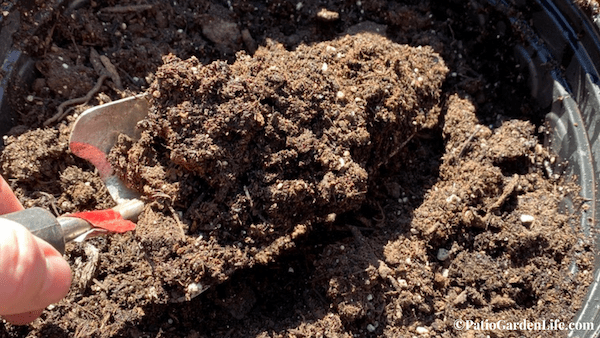
What’s the difference between potting soil and potting mix?
Potting mix vs potting soil
Often people will use potting mix and potting soil interchangeably in conversation. It’s totally understandable!
However, there are some key differences, as potting MIX doesn’t actually contain any soil.
Potting mix (also called soilless mix):
- Usually made of peat moss, perlite, vermiculite, aged bark, slow-release fertilizer, and coconut coir or other lightweight organic material.
- Contains aeration and drainage components like peat moss, which is why it is so light and fluffy compared to potting soil.
- Sterile and free of weeds and diseases.
- Contains fertilizer to keep your plants happy.
Potting soil:
- Usually made of a combination of the potting soil ingredients above, along with garden soil and compost.
- Not sterile and may contain weeds and diseases.
Compost can be added to all types of soil and is a great way to keep the planet and your plants healthy.
Compost vs potting soil
Compost is decomposed organic material that is used to enrich soil. Ingredients vary based on source, but in general compost can include a combination of vegetable scraps, grass clippings, dried leaves and animal products such as manure.
Potting soil, as I described above, is a combination of components that encourage root growth and moisture regulation.
Compost is often added to potting soil or potting mix to increase its nutrient levels. If you want to reuse potting soil from last season, adding compost can help restore nutrients and pH levels.
Potting mix vs seed-starting mix
Seed-starting mix is designed to have the texture and moisture retention necessary to encourage seeds to sprout and baby roots to grow.
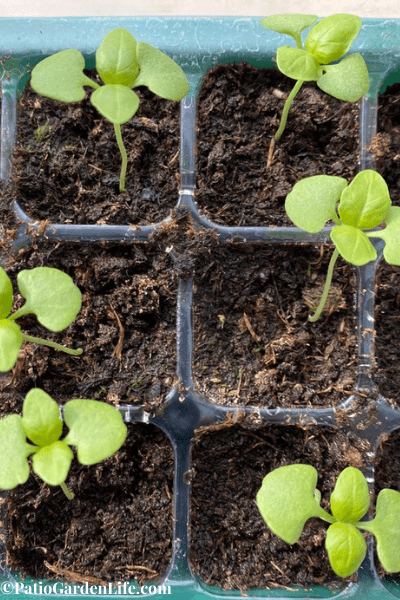
Some seed-starting mix does not contain nutrients, as the seedling using nutrients and energy from the seed itself to sprout. Pretty cool!
However, I recommend using a mix with some fertilizer included, like top-rated Espoma Organic Seed-Starter Premium Potting Mix or The Gardener Seed Starting Potting Mix.
I’ve started seeds in both fertilized potting mix and fertilizer-free coconut coir, and in my experience the fertilized option generally produces stronger seedlings.
Keep in mind your seedlings will need to be transplanted into potting soil once true leaves start to emerge.
I’ve made the mistake before of leaving seedlings in a seed-starting tray for too long! After the first or second set of true leaves emerge, they need nutrients. If you don’t provide them through potting soil or a little fertilizer in the starting container, they won’t thrive.
Peat moss vs. perlite
Peat moss and perlite are both key ingredients in potting mix. So what’s the difference?
- Peat moss can help your potting mix retain water (it acts like a sponge) while at the same time promote drainage, as it is airy and open. This means you can under- or overwater your plants a bit and they will likely still be fine. The downside to peat moss is it isn’t very sustainable since it takes a long time to grow and has a large carbon footprint to harvest.
- Perlite is a very porous volcanic glass that absorbs moisture on the exterior, making it perfect for transferring water to roots. It is a sterile substance and has a neutral pH, so it won’t compete with any soil amendments.
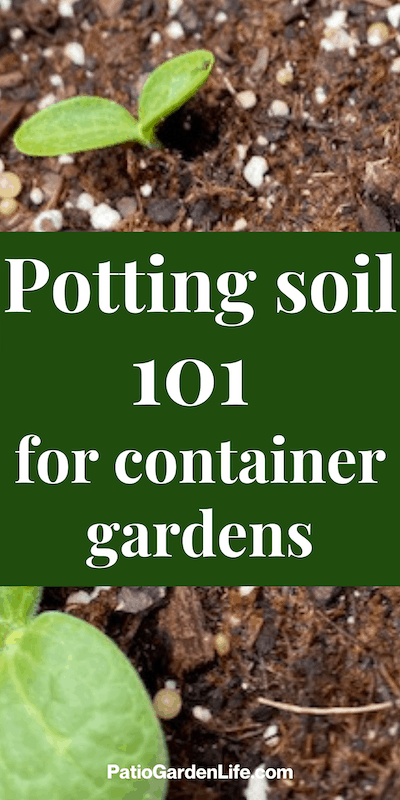
Can you use garden soil in pots?
Using garden soil in a pot isn’t a good idea, for a number of reasons:
- It isn’t sterile. It brings all kinds of critters from the ground, including bugs, bacteria and fungi.
- It can harbor weed seeds and other undesirable stowaways.
- Over time it compresses, which impedes drainage and loses aeration. Most plants prefer fluffy soil that gives their roots room to grow.
Can you mix potting soil with garden soil?

To improve texture, you can mix garden soil with equal parts peat moss and perlite, maybe adding some builder’s sand if it’s still dense.
This will help keep things light, but you may still deal with organisms and other undesirable creepy crawlies from the garden soil.
Garden soil can also make your pots very heavy and difficult to move, which might be an issue for you.
Overall, it is best to start fresh with either store-bought or DIY potting soil or mix.
Can you use topsoil in pots?
Topsoil is just what it sounds like: the top 6-10 inches of soil on the earth’s surface. So basically … dirt!
It typically includes a combination of clay, organic matter, minerals, water and air.
Topsoil is not good for container gardening because it’s dense and not sterile, much like garden soil.
And while garden soil can be mixed with potting soil and other ingredients to make a usable potting mix, as I described above, it’s not recommended to do the same with topsoil.
Best potting mix for container gardening
There are a lot of brands out there, but here are my favorites and most highly recommended brands from gardeners:
Overall top quality
Best organic
Can you reuse potting soil?
Potting soil can be used year after year, but it’s essential to add back nutrients.
The nitrogen, phosphorus, potassium and other nutrients and minerals in compost will be depleted, and peat moss and other amendments will have broken down and compacted. You will also have lots of roots and an undesirable pH.
This makes the soil unhealthy to sustain plant growth after a single season — without at least some basic rejuvenation.
Here are some ways to bring used potting soil or mix back to life:
- Spread on a tarp, trash bag, wheelbarrow or other surface and clear out any roots, dead leaves, and visible bugs.
- Sterilize by enclosing in a lidded bucket or tightly closed trash bag and setting in the sun for a day or two. This heats up the potting soil or mix enough to kill all or most of the diseases and other undesirable leftover pests.
- Combine it with equal parts new potting soil and compost, to restore nutrients and structure.
- Add slow-release fertilizer pellets (my favorite is Jobe’s Organics Slow-Release Plant Food).
- If the structure has compacted, add in coco coir or peat moss until it reaches the desired consistency. Remember these materials do not contain nutrients, so if you add a lot of them, also add some extra fertilizer pellets.
- Check the pH. Most vegetables do best around 6-7. See below for more pH details.

DIY potting soil
If you’re only doing a handful of pots, you may want to stick with the products linked above in this post. But if you’re going to use a large volume of potting soil, mixing it yourself is very economical.
Ingredients
It is important to know how each soil amendment works so you use the proper ones for the types of plants you wish to grow. The best potting mix for container gardens has a combination of materials designed to best support your edible plants:
Structure for aeration and moisture regulation
- Peat moss: Fibrous material moss harvested from boggy areas. It’s sterile and naturally resists some fungi and diseases. Most peat moss sold in the U.S. comes from sphagnum peat moss bogs in Canada. The use of peat moss in gardening is somewhat controversial, as it takes tens of thousands of years to develop and isn’t sustainable.
- Coconut coir: Another great option because it is easier to harvest than peat moss and considered to be more sustainable; slow to decompose so it lasts longer; sterile; and has a lower pH than peat moss.
- Perlite: Absorbs moisture on the outside of the cells to wick moisture to plant roots; sterile; and has a neutral pH so it won’t compete with other ingredients.
- Vermiculite: Retains even more moisture than perlite, making it ideal for seed starting and other applications where you don’t want the soil to dry out. It is also sterile and pH neutral. Pay attention to ratio below when adding to the mix, as too much can let mold or bacteria multiply or roots rot. Too little moisture and your plants won’t thrive.
- Builder’s sand: Helps build air pockets and improve aeration and texture. Use builder’s sand, which is courser than playground sand or beach sand and better for moisture retention.
Nutrients to encourage strong root, foliage and fruit/vegetable/herb growth
- Compost: Adds nutrients and organic matter to your soil.
- Slow-release fertilizer pellets add nutrients for up to 3 months. I swear by Jobe’s Organics Slow-Release Plant Food. It’s amazing, especially as an added boost for heavy feeders like pumpkins and zucchini.
Should you use sand in potting soil?
This is a common question. As I said above, sand lets you add air space to your mixture. This also improves drainage so you aren’t retaining too much water in your containers.
One thing to note: Too much sand will make your pots very heavy, so be mindful of that.
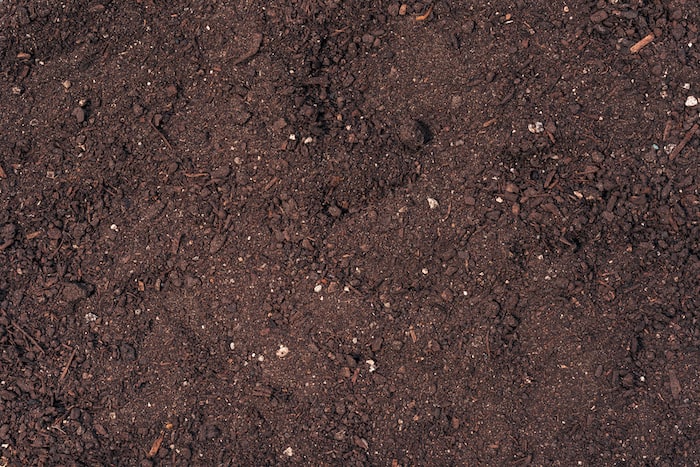
DIY potting mix ratio
A good all-purpose recipe:
- 2 parts peat moss or coco coir
- 1 part perlite
- 1 part vermiculite
- 1 part compost
- .25 part builder’s sand
- .25 part time-release fertilizer
DIY potting soil ratio
- 1 part garden soil
- 1 part peat moss or coco coir
- 1 part perlite or vermiculite
In both cases, it’s important to create loose soil that will allow water to drain easily. If your homemade soil or mix feels heavy or dense, add sand, peat moss and/or coco coir. If it’s too fine and sandy, add fiber from peat moss or coco coir.
Over time and with a little experimentation, you’ll learn what works best for you and your plants!
pH balance
Most home gardeners (myself included!) pay closest attention to the basics about potting mix: ingredients, nutrient ratios, moisture regulation, consistency.
However, another important factor to keep in mind is the pH level of the potting medium.
Most herbs and vegetables do best with neutral to slightly alkaline soil, between 6-7.
- If pH dips below about 5.5, add lime, or switch to wood ash if growing tomatoes or capsicums – they don’t do well with lime.
- If pH is high, add aluminum sulfate or sulfur. You can find these ingredients (and instructions for how to apply) in most garden stores.
While that’s a safe way to go, keep in mind that not all plants have the same pH preferences. If you’re getting serious about container gardening and want to learn more, the Farmer’s Almanac has a comprehensive guide to the ideal pH levels for a long list of vegetables and other plants.
This Soil pH Meter is a popular way to track not only pH but also moisture and light levels.

How to store potting soil over winter
You may want to sterilize it first by putting it in clean, lidded buckets, in a sunny area. This will heat it just enough to kill off any bad bacteria. You can then store it in clean, lidded plastic garbage cans or totes.
Do not store soil in the pots you used for the growing season. Especially if you have ceramic or clay pots, they will retain moisture from the soil and if you have frigid temperatures this can cause the pots to crack. Plus, having your soil ready to go, along with clean pots, means your spring planting season will come that much quicker!
Remember to add back nutrients with compost and slow-release fertilizer before reusing.
Now that you know all about potting soil, you’re ready to put that knowledge to good use! Here are some suggestions:
- How to grow cucumbers in pots
- Growing pumpkins in containers
- How to grow thyme in a pot
- Growing zucchini in containers
- Growing okra in pots
- How to grow catnip in pots
- How to grow parsley in a pot
- How to grow chamomile in a pot
And expand your gardening know-how even further!

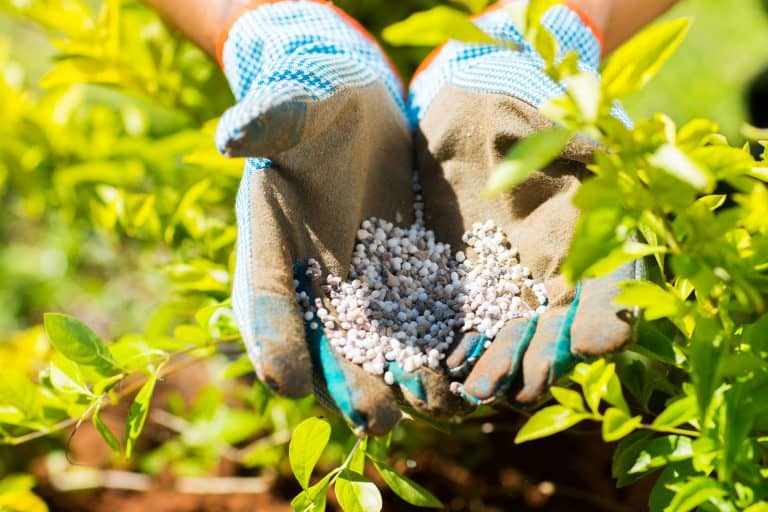
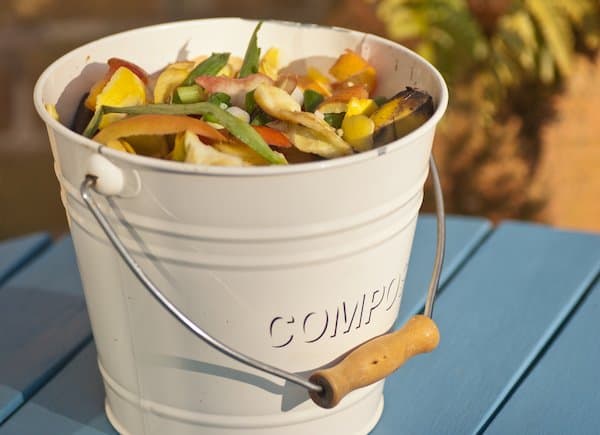
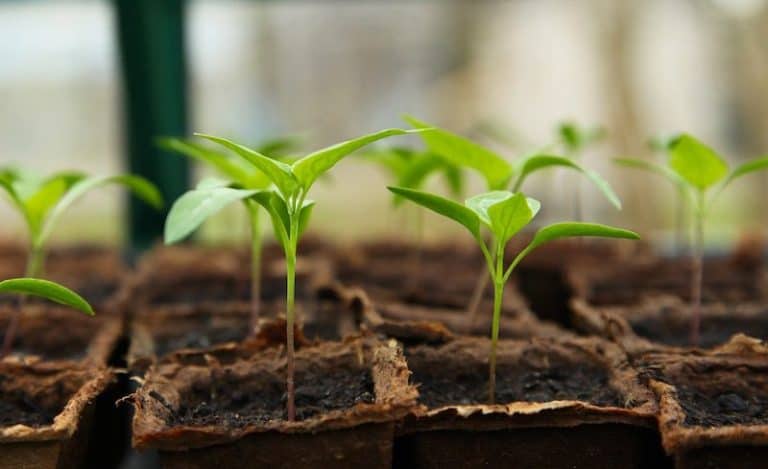
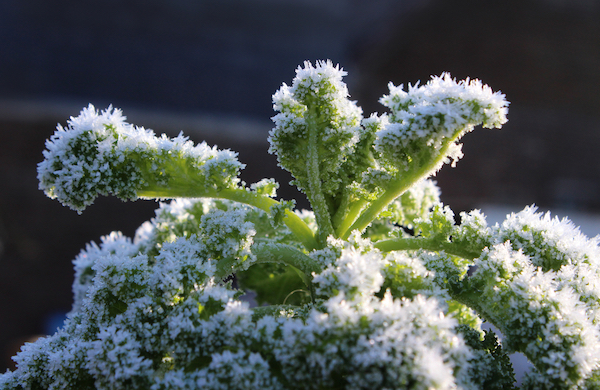
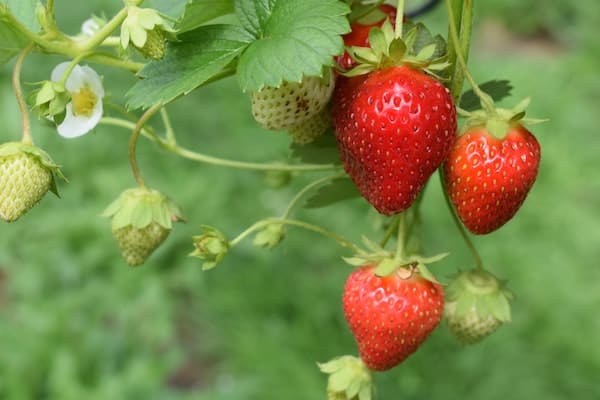
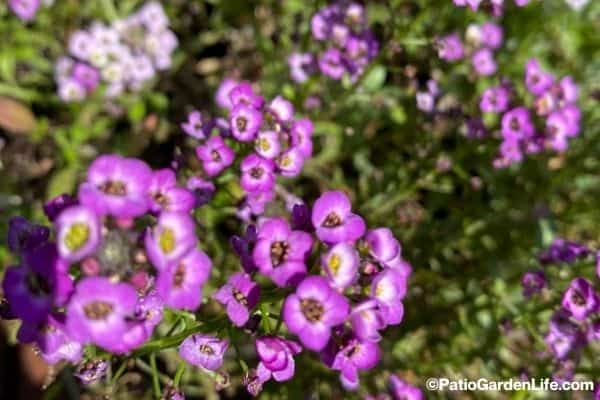

One Comment